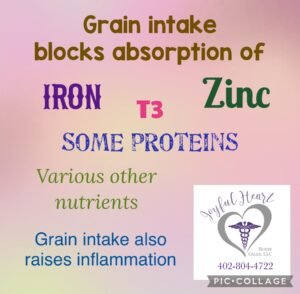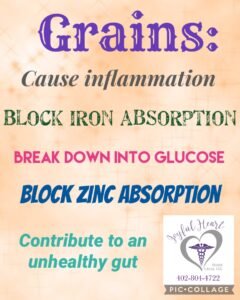THIS specific blog article is written to help health care providers better understand iron and ferritin, especially from a more functional perspective. THIS INFO is NOT intended for patient use, but is intended as professional education for medical colleagues.
Various symptoms can be attributed to anemia, low iron, or low ferritin. Oftentimes, we overlook these lab tests and think of them as unnecessary. However, more and more functional and holistic providers are ordering the iron/ferritin panel and guiding patients to correct the lower levels. According to functional providers, ideal ferritin level is 70-80 ng/mL, optimal iron level is 70-80 ug/dL, and iron saturation is preferred at top end of range.
Most of us were taught as RNs to recommend the use of Vitamin C with iron or red meat intake, but many patients typically don’t use enough Vitamin C to be of real value or to improve iron, ferritin, or saturation. As a result, iron levels rarely or slowly increase, making patients believe they cannot absorb iron. Another problem that impairs iron/ferritin absorption/utilization is using non-heme iron supplementation. Multiple studies have indicated very poor absorption & utilization of non-heme iron. What is non-heme iron? Plant-based iron. Ferrous polysaccharide will be absorbed at a rate approximately 65% less than ferrous bisglycinate, or heme-iron. Most other forms of iron, like gluconate or sulfate, cause terrible constipation, impacting compliance; therefore, I do not recommend these forms of iron at all. Ferrochel is my preferred iron supplement.
Takeaways:
- Check iron and ferritin panels with most any report of fatigue, brain fog, lack of stamina to get through the day.
- Recommend heme iron for best absorption.
- Recommend Vit C 2000 – 4000 mg with every iron dose, every red meat meal, and most any meal to optimize iron absorption from food.
- Recheck iron & ferritin panel every 4-5 months and remind patients to never take iron supplements “unchecked” b/c too much can be risky to the liver.
- Ideal absorption & use of iron/ferritin results in iron and ferritin numbers near each other (note they are DIFF measures) and a saturation around 40%.
https://www.ncbi.nlm.nih.gov/books/NBK540969/ Retrieved 8/30/22




